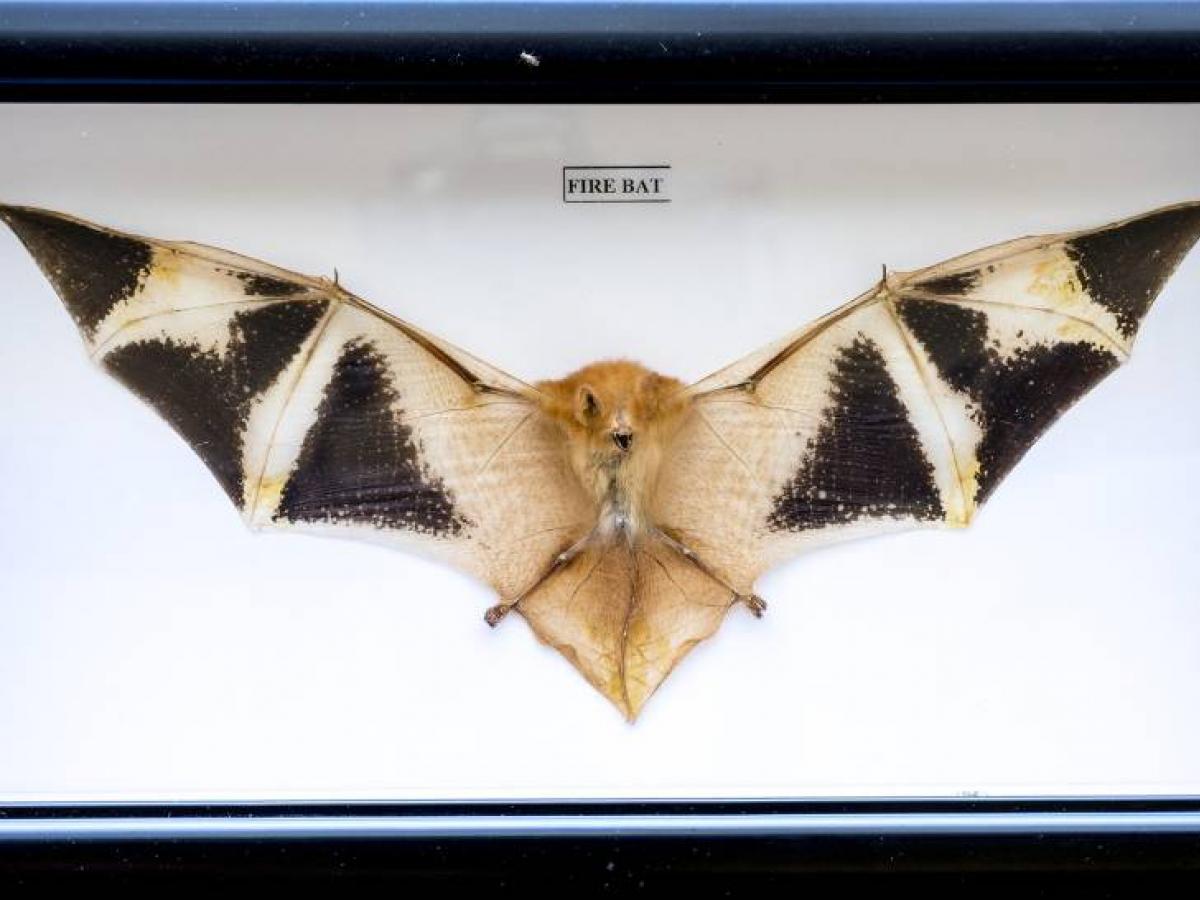Bat souvenir trade & risks to public health

Bat specimen preserved in a wooden box, sold on Ebay.
Little is known about the global bat souvenir trade, its extent and impact on bat populations and forest ecosystems, and the potential risks posed to public health with bats known carriers of zoonotic diseases.
In a preliminary study, published in Frontiers in Veterinary Science, researchers at the University of Adelaide identified over a 15-day period (May 2020), more than 4,400 bat specimens for sale on eBay listings across 24 countries, including Australia, Canada, Italy, Switzerland, United Kingdom and US. Items on offer were mostly taxidermy (61.2%) or skull (21.1%) specimens and most came from South-East Asia.
Overall, 32 different species of bat were advertised, including several species known internationally as vulnerable, near threatened or critically threatened.
“While deforestation, disturbance at roosting sites and hunting for food and/or medicine are more common threats, the large demand for dried specimens and skulls as tourist souvenirs and curios in local and foreign shops and online is also a significant problem."Dr Kyle Armstrong, University of Adelaide's School of Biological Sciences.
Study leader Dr Anne-Lise Chaber from the University of Adelaide’s School of Animal and Veterinary Sciences, who has been examining the trade of exotic animals since 2008, said, the threat of the trade to conservation and biodiversity is evident and is a genuine concern due to bats' important role in ecosystems.
Co-author, Dr Kyle Armstrong in the University of Adelaide’s School of Biological Sciences, said, bats provide many essential services in forest ecosystems, they are pollinators of plants, play a role in seed dispersal and insect control, in fact their very presence can serve as an indicator of a healthy forest ecosystem.
“While deforestation, disturbance at roosting sites and hunting for food and/or medicine are more common threats, the large demand for dried specimens and skulls as tourist souvenirs and curios in local and foreign shops and online is also a significant problem,” he said.
While current legislation exists to prevent the movement and trade of threatened species, including bats, into and out of Australia, Canada, Europe, and the United Kingdom, the researchers say, enforcement is challenging due to the high volume of items traded on the internet and shipped daily.
The study also highlights that bats are known to be hosts of significant zoonotic viruses, spillover events associated with this trade could possibly occur, especially because Ebolaviruses and Coronaviruses remain stable for some time.
“The methods by which the listed bats were sourced, collected, and killed for the purpose of taxidermy on the advertisements we found are unknown. We suggest it’s unlikely that bat harvesters are using effective personal protective equipment (PPE) that protects them against bites, scratches or secretions,” said co-author Dr Wayne Boardman with the University of Adelaide’s School of Animal and Veterinary Sciences.
“And it’s through bites and scratches and exposure to body fluids, tissues and excrement that transmission of novel infections most commonly occurs.”
The study also indicates that beyond the bat harvesting stage, knowledge of the procedures including biosecurity protocols for the preparation of bat taxidermy specimens is limited, and as a consequence the infectious disease risks during processing, exportation and importation are not known.
Dr Chaber said, “To more fully understand the risks, there is a requirement to understand which species act as reservoirs of infectious disease agents of zoonotic potential and the ability for the infectious disease agents to spillover from handled live bats and for them to survive and remain infectious in the tissues of the harvested animals and in contact materials.”
“Without understanding the methodology of harvesting and the specific processing and treatment conditions bats undergo before being listed for sale online, it is reasonable to suggest that the online bat trade could pose a human health risk.”
The research indicates that to properly understand the risks to public health a detailed risk assessment process would be required at each stage of the bat souvenir trade, but that is beyond the scope of this research.
“By getting a better understanding of the extent of this commodity chain and which species are involved, it may help to identify higher risk groups for zoonotic transmission,” said Dr Chaber.
Media Contacts:
Dr Anne-Lise Chaber, School of Animal and Veterinary Science, University of Adelaide, Mobile: +61 (0)452 177 745, Email: anne-lise.chaber@adelaide.edu.au
Kelly Brown, Communications Coordinator, External Relations, The University of Adelaide. Phone: +61 (0)466 943 613, Email: k.brown@adelaide.edu.au
